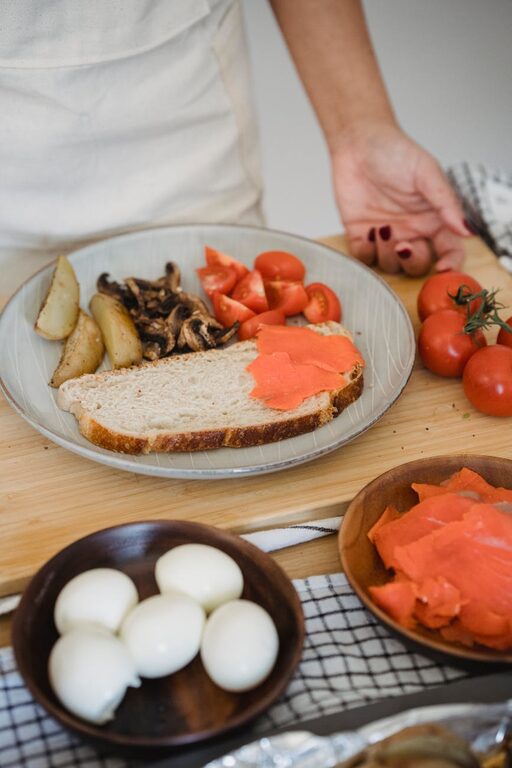Planning balanced meals doesn’t have to be overwhelming or time-consuming. Whether you’re cooking for yourself, your family, or friends, creating nutritious, well-rounded meals can be straightforward and enjoyable. In this post, we’ll explore practical steps to help you plan balanced meals without stress, ensuring you eat well and feel great every day.
What Is a Balanced Meal?
Before diving into meal planning, it’s helpful to understand what makes a meal balanced. A balanced meal typically includes a combination of:
– Protein: Supports muscle health and keeps you full. Examples include beans, lentils, chicken, fish, tofu, and eggs.
– Carbohydrates: Provide energy. Opt for whole grains like brown rice, quinoa, or whole wheat bread.
– Healthy Fats: Essential for brain function and absorption of vitamins. Sources include avocados, nuts, seeds, and olive oil.
– Vegetables and Fruits: Packed with vitamins, minerals, and fiber. Aim to fill half your plate with a variety of colors.
– Hydration: Drinking enough water is essential alongside eating.
By including these components, you ensure your meals provide a range of nutrients for your body’s needs.
Steps to Plan Balanced Meals Without Stress
1. Start With a Weekly Outline
Begin by sketching out a simple meal plan for the week. You don’t need to have every detail figured out—just note down:
– Number of meals to prepare
– Days when you’ll eat out or have leftovers
– Any special dietary needs
This big-picture view helps reduce last-minute guesswork and food waste.
2. Choose Simple Recipes You Enjoy
Focus on recipes that are straightforward and use ingredients you like. Keep a collection of reliable go-to meals to mix into your plan. For example:
– Stir-fried vegetables with tofu and rice
– Grilled chicken salad with a vinaigrette
– Pasta with a tomato-based sauce and a side of steamed greens
Making your favorite healthy recipes can turn meal planning into a fun and rewarding routine.
3. Incorporate Batch Cooking and Leftovers
Batch cooking means preparing larger portions that you can portion out and eat over several days. It saves time and reduces effort during busy weekdays. Some ideas include:
– Cooking a big pot of chili or stew
– Roasting a tray of mixed vegetables
– Baking a whole chicken or a casserole
Leftovers can be repurposed into new meals, like turning roasted veggies into a wrap or salad topping for added variety.
4. Use the Plate Method as a Guide
The plate method is a simple visual tool to help build balanced meals without measuring or tracking calories. Fill half your plate with vegetables and fruits, one quarter with protein, and one quarter with whole grains or starchy vegetables. Add a small amount of healthy fat.
This approach works well for any meal and takes the pressure off precise portion control.
5. Keep a Well-Stocked Pantry
Having healthy staples on hand makes creating balanced meals easier and less stressful. Keep essentials such as:
– Canned beans and lentils
– Whole grains like quinoa and brown rice
– Nuts and seeds
– Olive oil and vinegar
– Spices and herbs
These ingredients form the building blocks of many nutritious meals and help you whip up dishes quickly.
6. Plan Snacks Wisely
Balanced eating isn’t just about main meals. Consider healthy snacks to keep energy levels steady, such as:
– Fresh fruit
– Yogurt with nuts
– Cut vegetables with hummus
– Whole-grain crackers with cheese
Planning snacks ahead keeps you prepared and avoids unhealthy choices when hunger strikes.
7. Stay Flexible and Adjust as Needed
Meal plans should be guides, not strict rules. Allow room for changing schedules, cravings, or unexpected events. If one day’s dinner doesn’t go as planned, swap meals or rely on quick, healthy options like a salad with canned tuna.
Being adaptable reduces stress and keeps meal planning enjoyable.
Tips for Stress-Free Meal Prep
– Set aside a regular time: Dedicate a block of time weekly to plan, shop, and prep.
– Use kitchen tools: Slow cookers, instant pots, and food storage containers make cooking and storing easier.
– Get the family involved: Share tasks like chopping vegetables or picking recipes. This builds teamwork and makes cooking more fun.
– Focus on progress, not perfection: Healthy eating is a journey. Aim for balanced meals most of the time, but don’t worry about occasional treats.
Sample Balanced Meal Plan Example
| Meal | Protein | Carbohydrate | Vegetables/Fruits | Healthy Fat |
|—————-|———————|———————-|——————————|————————-|
| Breakfast | Greek yogurt | Oats | Berries | Chia seeds |
| Lunch | Grilled chicken | Quinoa | Mixed greens, cherry tomatoes| Olive oil dressing |
| Snack | Almonds | – | Apple slices | – |
| Dinner | Baked salmon | Sweet potato | Steamed broccoli | Avocado slices |
This simple plan can be adapted to personal tastes and dietary needs.
Final Thoughts
Planning balanced meals doesn’t have to be complicated or stressful. By following these tips, you can create nourishing meals that support your well-being while fitting your lifestyle. Remember, the goal is to eat a variety of wholesome foods, enjoy the process, and be kind to yourself along the way.
Happy meal planning!

